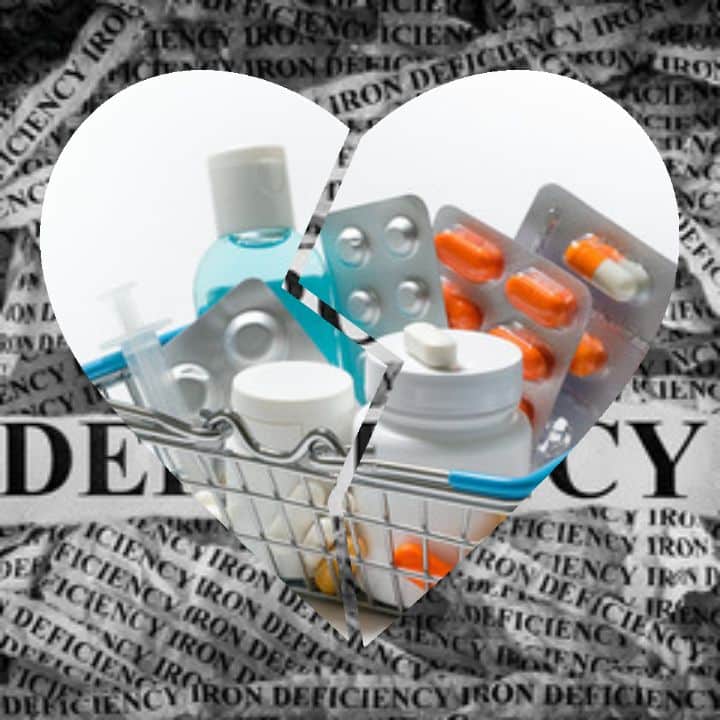Have you wondered if you have an iron deficiency? Perhaps someone’s suggested that you might be based on specific characteristics in your lifestyle. Iron deficiency anaemia is not all that uncommon, particularly in women. Some estimates say around 20% of women and 3% of men don’t have enough iron in their bodies. Around 50% of pregnant women become iron deficient during their pregnancies. But what does any of this really mean, anyway? Well, if you truly do have an iron deficiency, there are some things you’ll want to know, so let’s explore this condition a little more in-depth.
What is an Iron Deficiency?
An iron deficiency occurs when your blood doesn’t have enough of the mineral iron floating in it. Iron is responsible for making haemoglobin (a protein that helps red blood cells carry oxygen around your body). When you don’t have enough iron, you don’t have enough haemoglobin. when you don’t have enough haemoglobin, your red blood cells don’t have enough oxygen to carry from Point A to Point B in your body. It’s a domino effect, really.
If your body doesn’t have enough haemoglobin, and your tissues and muscles aren’t getting enough oxygen, they won’t work properly. This, in turn, causes anaemia.
What is the Difference Between Anemia and an Iron Deficiency?
Anaemia and iron deficiencies often go together, but not necessarily. Anaemia is caused by a lack of haemoglobin. An iron deficiency is caused by a lack of iron. If your blood isn’t producing enough iron, which is then not able to produce enough haemoglobin, you have iron-deficiency anaemia. You can, however, have anaemia without having an iron deficiency (and vice versa). Your body can actually have low iron without your haemoglobin levels dropping. In this case, you would have an iron deficiency but not have anaemia.
The symptoms of anaemia and iron deficiency tend to be pretty similar. See your doctor if you suspect you might have either.
Common Signs and Symptoms of Iron Deficiencies
While everybody’s different, there are a few symptoms that might point toward an iron deficiency, including:
- Unusual tiredness
- Pale skin
- Shortness of breath
- Headache and dizziness
- Heart palpitations
- Dry skin
- Damaged skin or hair
- Swelling of the tongue and mouth
- Soreness in the oral cavity
- Restless legs
- Brittle or spoon-shaped fingernails
- Strange cravings (such as for inedible things like clay, dirt, chalk, or paper)
- Extreme anxiety
- Hands and feet that are colder than they should be
- Frequent infections
If you relate to several of these symptoms, it might be best to see your doctor confirm if you have an iron deficiency.
How to Live with an Iron Deficiency
If you have an iron deficiency, iron supplements can help restore some of this element that’s naturally missing from your body. Be sure to eat foods that are rich in iron, such as baked potatoes, kidney beans, tofu, spinach, and oysters. Additionally, eat and drink foods that help your body absorb iron, like orange juice, strawberries, and broccoli.
If you suspect you might have an iron deficiency, see your doctor. A quick blood test should confirm whether you’re iron deficient or not. From there, your doctor can help guide you along the best path possible to optimize your health and wellness.





